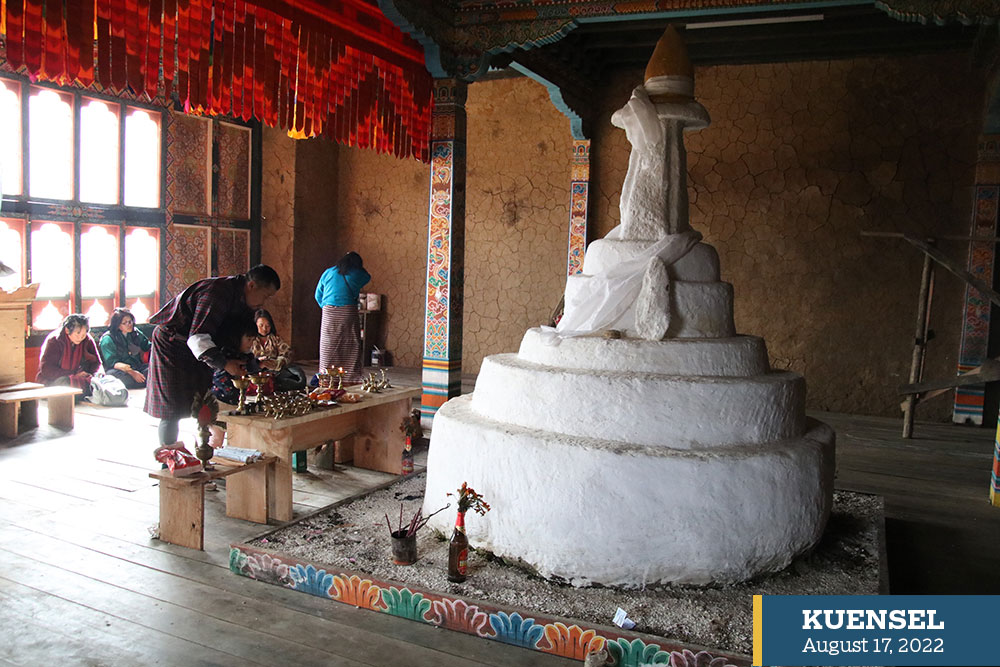Nima Wangdi
High up in the mountains above Ngalimang village in Bumdeling, Trashiyangse, there is a unique and sacred choeten. It has always been there but many people do not know about its existence.
The choeten, about seven feet tall, is curved from a solid rock and has five bangrim (layers). It is believed that 100,000 khandom (dakini) built it in a night. Because it is believed that the choeten was curved out of a solid rock, it is known as Rangjung Choeten, which literally means the choeten curved out of a solid rock.
Village elders say that the khandoms could not complete the choeten when the day broke and so the people had to add nyindha (sun and the moon), the quintessential parts of the choeten, later.
Rangjung Choeten stands at the end of a sloppy meadow in the middle of the coniferous forest. Opposite, one can see the famous Rigsum Goenpa. On its right are footprints of the many khandoms on a rock. People believe that some khandom performed a dance on this rock while others were building the choeten.
Samten Dorji, 42 from Ngalimang village said that there is no written history about the choeten. He said the villagers and the people herding cattle in the mountain used to organise tshechu every year.
People have different stories to share on how the choeten was first discovered. Some say a hunter chanced upon it. Others say that a herder found it first.
Samten Dorji said the name of the valley, Bumdeling, was derived from this choeten. He said the gewog was named Bumdeling after 100,000 khandom built the choeten. Bumdeling, loosely translated, means the land of a group of 100,000.
He said the choeten stood on an open ground until a village lama roofed it with bamboo thatch many years ago. Later, a herder is said to have built a wall over which a roof was added.
Last year, with funding from the gewog administration and labour contribution from the villagers, a one-storey lhakhang was built which can accommodate about 100 people. The choeten stands in the middle of the lhakhang.
Adorned with beautiful traditional paintings and shiny CGI sheets, the lhakhang stands out in the middle of the forest.
At the base of the choeten, if lucky, one can see footprints on fresh and soft sand. These, the people here say, are the footprints of the khandoms who come to do the rounds every night.
The villagers organise tshogbum, riwo sangchoe and nyungney here every year.
The choeten is the main relic, according to Samten Dorji, who coordinated the construction of the lhakhang. The people are soliciting funds to carry out mural painting on the walls of the lhakhang. Recently, a man from Paro donated the serto (golden pinnacle) for the lhakhang.
The tradition here has been that herder conduct lhabsang on the third day of their arrival at their pastureland at Yorupeng. Milk is poured into the nearby lake.
“Tshechu and lhabsangs were conducted for the well-being of the cattle,” Samten Dorji.
According to Shacha Dema, 81, people used to bring ashes from the fire made during the tshechu at the choeten and sprinkled in the fields. “This stopped wild animals from harming crops.”


